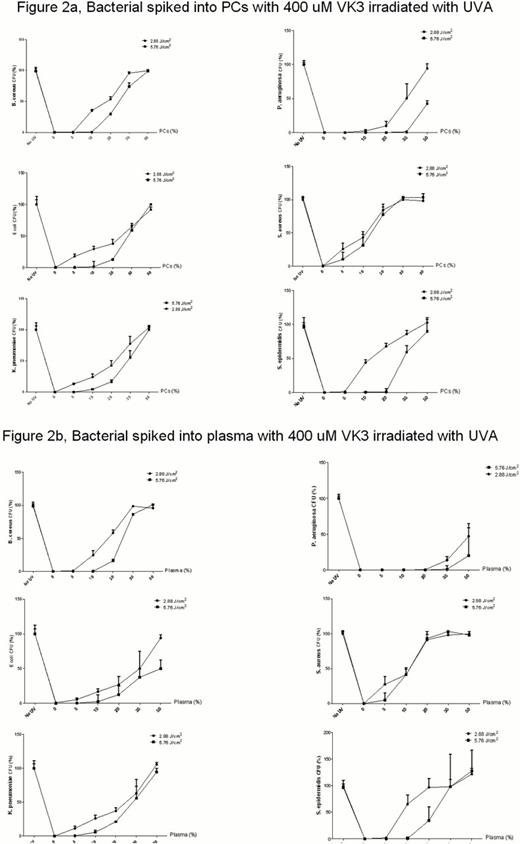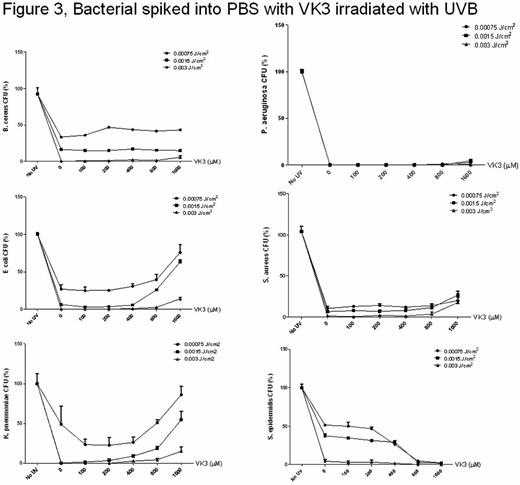Abstract
Abstract 3434
Human platelets are stored up to 5 days at room temperature and may support bacterial growth before transfusion. Transfusion of bacterially contaminated platelets remains the highest transfusion transmitted infectious disease risk today. One approach to reducing this risk is the development of safe and effective pathogen reduction methodologies. We evaluated UV light (A and B) with vitamin K3 (VK3) as a photosensitizer for efficacy in reducing bacterial growth in platelet concentrates and plasma.
Six species of bacteria, including Bacillus cereus, Pseudomonas aeruginosa, Staphylococcus aureus, Staphylococcus epidermidis, Klebsiella pneumoniae and Escherichia coli, were spiked respectively into phosphate buffered saline (PBS) buffer and exposed to UVA irradiation before bacterial growth was determined. As shown in Figure 1, the bacterial colony forming units (CFU) were reduced with increasing VK3 concentrations and UVA dosages. The VK3 at 400 uM plus UVA-radiation (2.88 J/cm2) significantly reduced the bacterial CFU in PBS spiked with bacteria.
The same six-bacteria panel were spiked respectively into platelet concentrates (PCs) diluted with platelet additive solution and mixed with 400 uM VK3 before the UVA irradiation. As shown in Fig 2a, the bacteria CFU were reduced with increasing dosage of UVA but efficacy declined with lower dilution of PCs. At VK3 concentration of 400 uM and PC diluted to 20% a UVA-dose of 5.76 J/cm2 significantly reduced bacterial CFUs in PCs spiked with E coli, K pneumoniae, P aeruginosa and S epidermidis respectively. Similar results were obtained with the same six-bacteria panel spiked into plasma as shown in Fig 2b.
UVB and VK3 combination had a biphasic inhibitory effect as shown in Fig 3. The VK3 at 200 uM plus UVB-radiation (0.015 J/cm2) also significantly reduced the CFU from the same six-bacteria panel spiked into PBS. However higher concentrations of 1600 uM VK3 could partially reverse the bacterial growth inhibition under UVB-radiation at 0.0038, 0.0075, and 0.015 J/cm2 for E coli, K pneumoniae and S aureus bacterial organisms.
These findings suggest that VK3 may serve as an effective UVA photosensitizer for pathogen reduction of human platelets. With UVB light, lower concentrations of VK3 are effective at inhibiting bacterial proliferation but higher concentrations of VK3 may serve as a weak UVB blocker. Additional studies will need to be conducted to determine the impact of UV light and VK3 on platelet in vitro and in vivo performance.
“This abstract reflects the views of the author and should not be construed to represent FDA's views or policies.”
No relevant conflicts of interest to declare.
Author notes
Asterisk with author names denotes non-ASH members.




